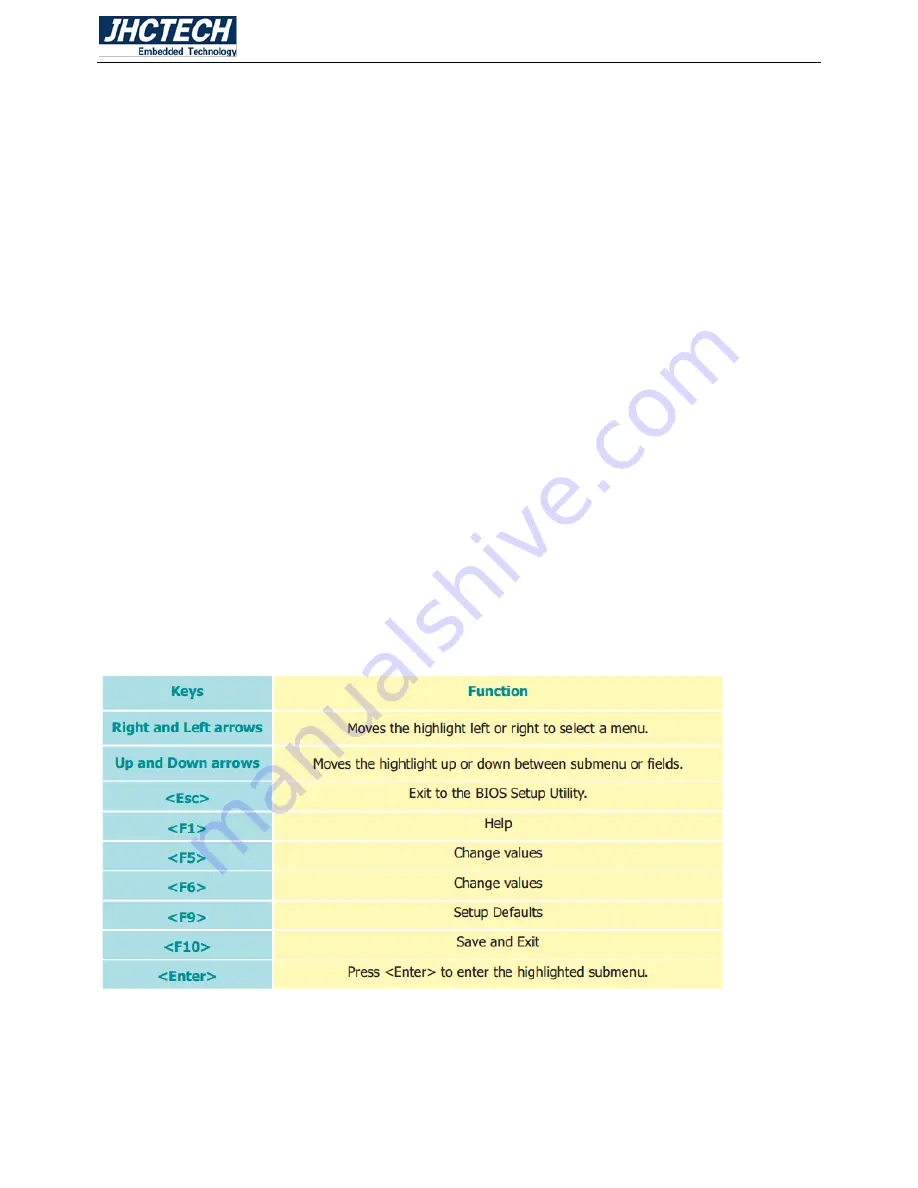
User’s Manual
36
3.1 Overview
The BIOS is a program that takes care of the basic level of communication between the CPU
and peripherals. It contains codes for various advanced features found in this system board.
The BIOS allows you to configure the system and save the configuration in a battery-backed
CMOS so that the data retains even when the power is off. In general, the information stored
in the CMOS RAM of the EEPROM will stay unchanged unless a configuration change has been
made such as a hard drive replaced or a device added.
It is possible that the CMOS battery will fail causing CMOS data loss. If this happens, you need
to install a new CMOS battery and reconfigure the BIOS settings.
3.2 Default Configuration
Most of the configuration settings are either predefined according to the Load Optimal Defaults
settings which are stored in the BIOS or are automatically detected and configured without
requiring any actions. There are a few settings that you may need to change depending on
your system configuration.
3.3 Entering the BIOS Setup Utility
The BIOS Setup Utility can only be operated from the keyboard and all commands are keyboard
commands. The commands are available at the right side of each setup screen.
The BIOS Setup Utility does not require an operating system to run. After you power up the
system, the BIOS message appears on the screen and the memory count begins. After the
memory test, the message ―Press DEL to run setup‖ will appear on the screen. If the message
disappears before you respond, restart the system or press the ―Reset‖ button. You may also
restart the system by pressing the <Ctrl> <Alt> and <Del> keys simultaneously.
3.4 Legends
3.5 Scroll Bar
When a scroll bar appears to the right of the setup screen, it indicates that there are more
available fields not shown on the screen. Use the up and down arrow keys to scroll through all
the available fields.
Summary of Contents for ALAD-A1201T
Page 8: ...User s Manual 1 General Information CHAPTER 1 ...
Page 12: ...User s Manual 5 Hardware Installation CHAPTER 2 ...
Page 19: ...User s Manual 12 2 4 I O indication Front view Rear view Figure 2 11 ...
Page 25: ...User s Manual 18 Figure 2 22 Figure 2 23 ...
Page 32: ...User s Manual 25 Figure 2 35 Figure 2 36 ...
Page 38: ...User s Manual 31 Figure 2 47 Step 2 Plug USB device into the USB type A connector Figure 2 48 ...
Page 41: ...User s Manual 34 Step 3 Insert the screws into each clamp and fasten them Figure 2 52 ...
Page 42: ...User s Manual 35 BIOS Setup CHAPTER 3 ...
Page 52: ...User s Manual 45 Figure 3 11 PCI Express Configuration Figure 3 12 PCI Express Root Port ...
Page 58: ...User s Manual 51 Figure 3 20 USB Boot 3 12 Exit Figure 3 21 Exit ...
Page 60: ...User s Manual 53 Driver Installation CHAPTER 4 ...






























